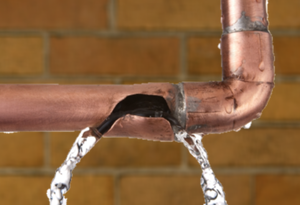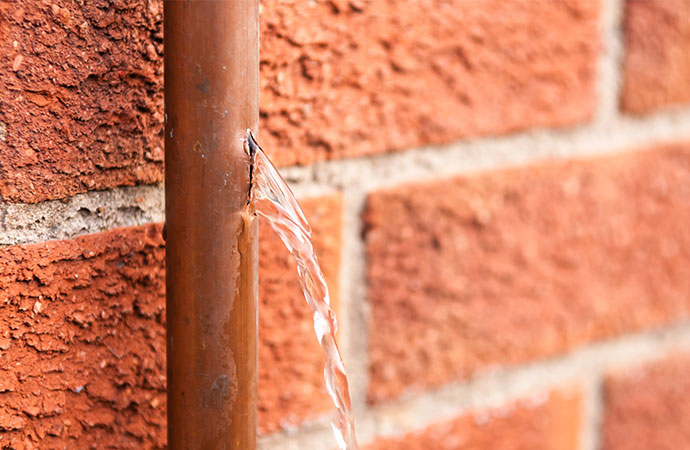Quick Guide: Identifying and Repairing Ruptured Pipes in your house
Quick Guide: Identifying and Repairing Ruptured Pipes in your house
Blog Article
What're your concepts about How to Prepare for Your Dishwasher Installation?

A ruptured pipe is a major emergency; you can just stand as you see water you pay very much to reunite with the earth. In even worse instances, you observe a pool on your kitchen floor, which is a great journey danger, particularly if you have children around. If the pipeline that ruptured was in your walls, trouble: you might need to repaint that whole area.
How can a calamity like a ruptured pipeline be avoided and taken care of? Well, by paying attention to your expert emergency plumbers and also complying with these regulations.
Exactly how do I understand when my pipelines have ruptured?
Varying water stress
Pipelines do not just burst in a day. You might have observed that your cooking area tap or shower doesn't run promptly when you turn the tap. It may stop for a couple of seconds and afterwards blast you with more pressure than typical.
In various other circumstances, the water may appear normal in the beginning, then decrease in pressure after a couple of seconds.
Damp wall surfaces as well as water stains
Prior to a pipe bursts, it will certainly leak, the majority of times. If this consistent leaking goes undetected, the leak may finish right into a large gouge in your pipeline. One simple way to prevent this emergency is to watch out for damp wall surfaces ad water stains. These water discolorations will lead you right to the leakage.
Puddles under pipes and sinks
When a pipeline bursts, the discharge forms a pool. It may show up that the puddle is expanding in dimension, and despite how many times you wipe the puddle, in a couple of minutes, there's an additional one waiting to be cleansed. Commonly, you may not be able to trace the pool to any type of noticeable pipes. This is an indicator to call a professional plumber.
Untraceable trickling noises
Pipeline ruptureds can happen in the most undesirable places, like within concrete, inside walls, or under sinks. When your home goes quiet, you may be able to listen to an irritatingly relentless dripping sound. Also after you've examined your shower head and kitchen area faucet, the dripping might continue.
Precious viewers, the dripping might be originating from a pipe inside your walls. There isn't much you can do regarding that, other than tell a specialist plumber.
Shut down the Water
When water ices up, it broadens in quantity by concerning 9 percent. And it expands with incredible pressure: The pressure inside pipelines may go from 40 pounds per square inch to 40,000 psi! No pipeline can hold that much pressure, so it bursts. The break may happen where the ice kinds, but regularly, it occurs where water pressure locates a weak spot in the pipeline. That may be inches and even feet from the icy area. Discover the water shutoff valve and also turn off the water to avoid even more damage. You may additionally need to turn off the power as well, depending upon where the leakages takes place and how huge it is.
Infected water
Many people presume a ruptured pipeline is a one-way electrical outlet. Quite the contrary. As water flows out of the hole or laceration in your plumbing system, pollutants locate their method.
Your water might be contaminated from the source, so if you can, check if your water storage tank has any type of issues. Nonetheless, if your alcohol consumption water is provided and also detoxified by the local government, you should call your plumber instantly if you see or smell anything funny in your water.
What do I do when I find a burst pipe?
Your water meter will remain to run also while your water wastes. To lessen your losses, discover the primary controls as well as transform the supply off. The water pipe are an above-ground framework beside your building.
How to Fix & Detect a Leaking Pipe
How Do I Know if a Pipe is Leaking?
Leak detection tests can help you determine if your pipe has a leak. Even if you don’t see an apparent leak, you should still conduct leak detection tests regularly to save water and money—and prevent major damage to your home.
Water meter. It can be helpful to figure out what your usual water meter usage numbers are and then monitor them regularly. To monitor your meter, first, turn off all water faucets in your home. Check the meter and write down the numbers. In a few hours, check the meter again. If the numbers have changed, you have a leak. Water gauge. Use a water gauge to test your water pressure. Your showerhead should produce a certain amount of water pressure based on its model and design. If the pressure is lower than it is supposed to be for that specific showerhead, your home likely has a leak. Puddles. Look inside your bathroom, laundry, and kitchen sink cabinets. Puddles around the cabinets or around toilets, tubs, showers, and washing machines indicate the presence of a leaking pipe. You may also notice loose tiles, peeling or flaking paint, or mold caused by water accumulation. Napkin test. Even if you don’t see any puddles, you may still have a leak. You can test for water leaks in the bathroom, laundry, and kitchen by wiping below-sink connections with a napkin, paper towel, or piece of toilet paper. If it becomes damp, you probably have a leaking pipe under the sink. Discolored walls. Walls that are discolored—usually with brown or yellow stains—or bulging might mean that they have been impacted by water damage caused by a leaking pipe. Smell. A leaky pipe will create sitting water, and over time, that water may develop a musty smell. If your home smells musty, but you can’t locate the source, it may be due to a leak. Steps for Fixing a Leaking Pipe
A leaky drain can be remedied by tightening the pipe base, replacing the drain seal, caulking the rim, and tightening the pipe nut. Similarly, a leaking toilet pipe can be treated by tightening the packing nut. You may also need to replace the valve. A leaky faucet may just need tightening or replacement of the washers. If that doesn’t work, consider replacing your faucet. If your pipe has a hole in it, you may want to use a pipe leak sealer or pipe leak tape. This quick fix for water pipe leaks can also temporarily fix a copper pipe leak. https://www.ahs.com/home-matters/quick-tips/how-to-tell-if-pipes-are-leaking/

I came across that blog posting on How to Install and Connect a New Dishwasher while surfing around the search engines. Sharing is nice. You just don't know, you may just be doing someone a favor. Thanks so much for your time spent reading it.
Set An Appointment
Report this page